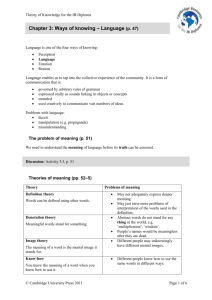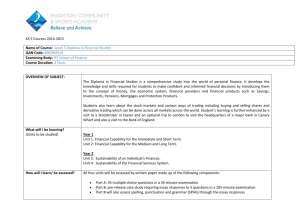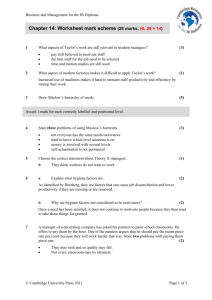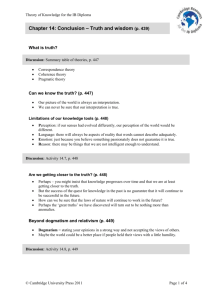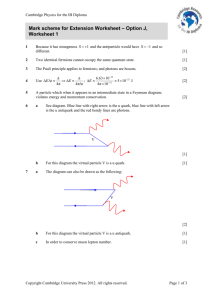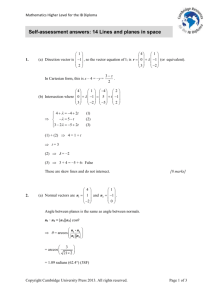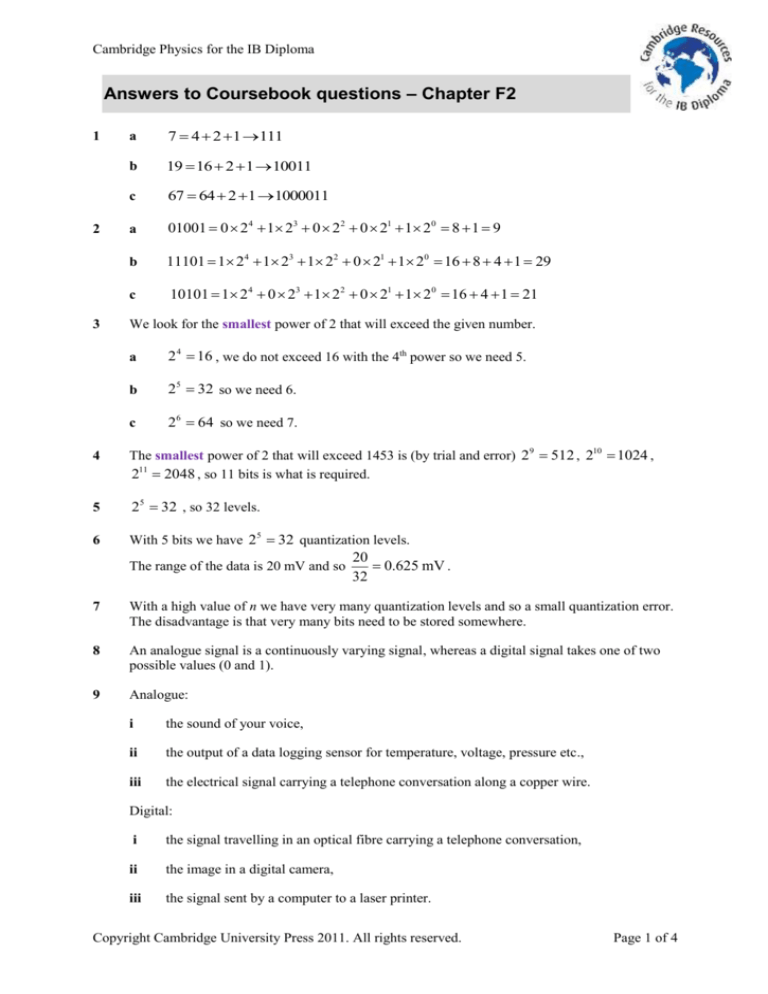
Cambridge Physics for the IB Diploma
Answers to Coursebook questions – Chapter F2
1
2
3
a
7 4 2 1 111
b
19 16 2 1 10011
c
67 64 2 1 1000011
a
01001 0 24 1 23 0 22 0 21 1 20 8 1 9
b
11101 1 24 1 23 1 22 0 21 1 20 16 8 4 1 29
c
10101 1 24 0 23 1 22 0 21 1 20 16 4 1 21
We look for the smallest power of 2 that will exceed the given number.
a
2 4 16 , we do not exceed 16 with the 4th power so we need 5.
b
25 32 so we need 6.
c
26 64 so we need 7.
4
The smallest power of 2 that will exceed 1453 is (by trial and error) 29 512 , 210 1024 ,
211 2048 , so 11 bits is what is required.
5
25 32 , so 32 levels.
6
With 5 bits we have 25 32 quantization levels.
The range of the data is 20 mV and so
20
0.625 mV .
32
7
With a high value of n we have very many quantization levels and so a small quantization error.
The disadvantage is that very many bits need to be stored somewhere.
8
An analogue signal is a continuously varying signal, whereas a digital signal takes one of two
possible values (0 and 1).
9
Analogue:
i
the sound of your voice,
ii
the output of a data logging sensor for temperature, voltage, pressure etc.,
iii
the electrical signal carrying a telephone conversation along a copper wire.
Digital:
i
the signal travelling in an optical fibre carrying a telephone conversation,
ii
the image in a digital camera,
iii
the signal sent by a computer to a laser printer.
Copyright Cambridge University Press 2011. All rights reserved.
Page 1 of 4
Cambridge Physics for the IB Diploma
10
Both are analogue signals. In the first case it is an electromagnetic wave, AM or FM
modulated, that is sent from a radio station broadcasting antenna to your radio’s
antenna. The sound emitted from the loudspeaker is ordinary sound and so analogue.
11
A binary code is the equivalent value of a signal in binary. A digital signal is the representation
of this value in terms of square waves.
12
a
Sampling means measuring the value of a signal at a particular time.
Sampling frequency is the frequency at which the measurements are made.
b
The higher the sampling frequency the easier it is to reconstruct the signal from its
samples.
c
i
See graph in answers (see page 812 in Physics for the IB Diploma).
ii
It is impossible to reconstruct the signal – the sampling frequency is too low.
13
The Shannon–Nyquist theorem refers to the conditions under which a signal may be accurately
reconstructed from its samples. It states that for the reconstruction to be possible the sampling
frequency must be at least twice the highest frequency in the signal.
14
See diagram on page 812 in Physics for the IB Diploma.
15
We assign 0 to the low flat line and 1 to the high line so as to get
001 100 001 111 100 101 100
16
The complete solution is on page 812 in Physics for the IB Diploma.
17
The complete solution is on page 813 in Physics for the IB Diploma.
18
The complete solution is on page 813 in Physics for the IB Diploma.
19
a
The bit rate is equal to fsampling n , where n is the number of bits and so equals
5.0 103 8 40 kbit s1 .
20
21
1
0.025 ms 25 μs .
40 103
b
The bit duration is the reciprocal of the bit rate, i.e.
a
3
1
1
The bit rate is 44.110 32 1411 kbit s 1.4 Mbit s .
b
1
0.709 μs .
1.411
The time is
1
2.5 104 s 0.25 ms .
3
4.0 10
Copyright Cambridge University Press 2011. All rights reserved.
Page 2 of 4
Cambridge Physics for the IB Diploma
22
a
Recording
ADC
music
Parallel
to
serial
microphone/amplifier
CD
b
Playback
Serial
to
parallel
music
DAC
CD
amplifier/loudspeaker
23
ADC
Parallel
to serial
Serial to
parallel
DAC
microphone
24
The parallel to serial converter transmits the bits in a sample one by one along one conduction
line. It would be expensive and impractical to have 8 different wires running parallel to each
other.
25
The transmission of many different signals on the same transmission line.
Copyright Cambridge University Press 2011. All rights reserved.
Page 3 of 4
Cambridge Physics for the IB Diploma
26
a
The times at which samples are taken are separated by
1
1.25 104 s 125 μs .
8.0 103
16 s
dead time
125 s
The dead time is therefore (see diagram) 125 8 2.0 109 μs (since there are 8 bits
in the sample.
27
b
109
6.8 6 more.
16
c
It would decrease because the time in between the samples would be reduced.
The Schmitt trigger uses the comparator property of an op-amp (i.e. the output depends on
whether the input signal is smaller or greater than a reference voltage value) except that there
are two reference voltage values that the input signal is compared to. There is one value when
the input signal is increasing and another when it is decreasing.
Copyright Cambridge University Press 2011. All rights reserved.
Page 4 of 4

